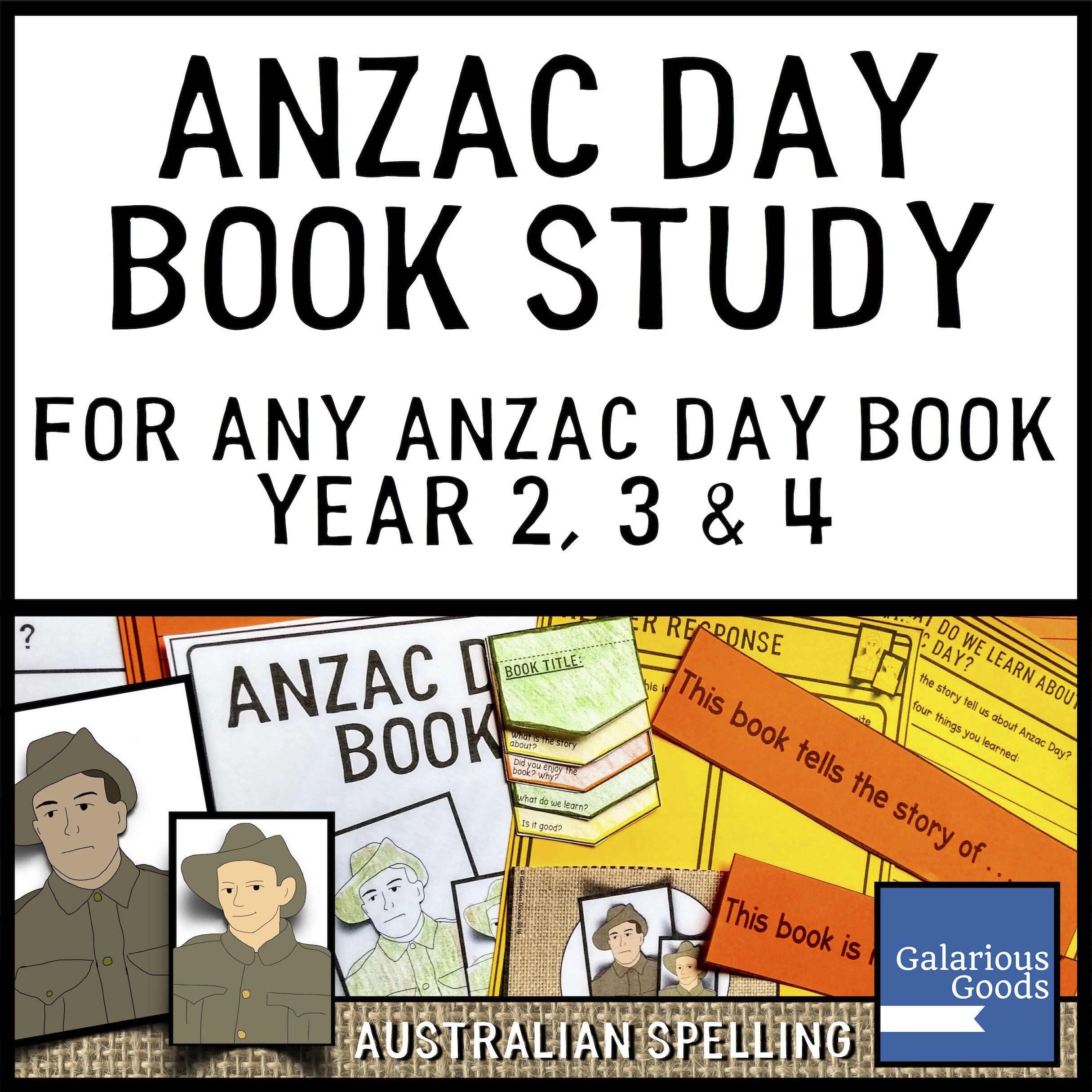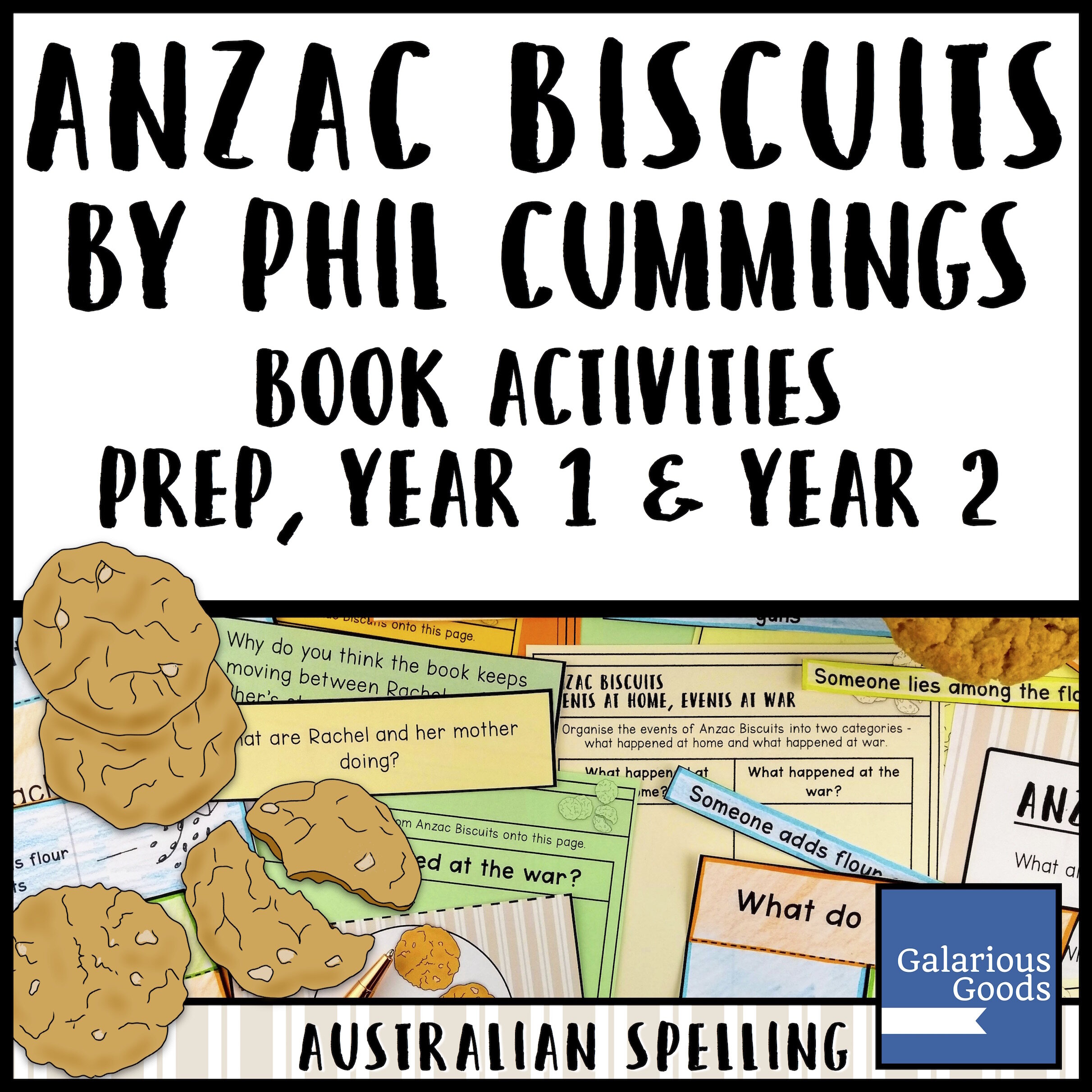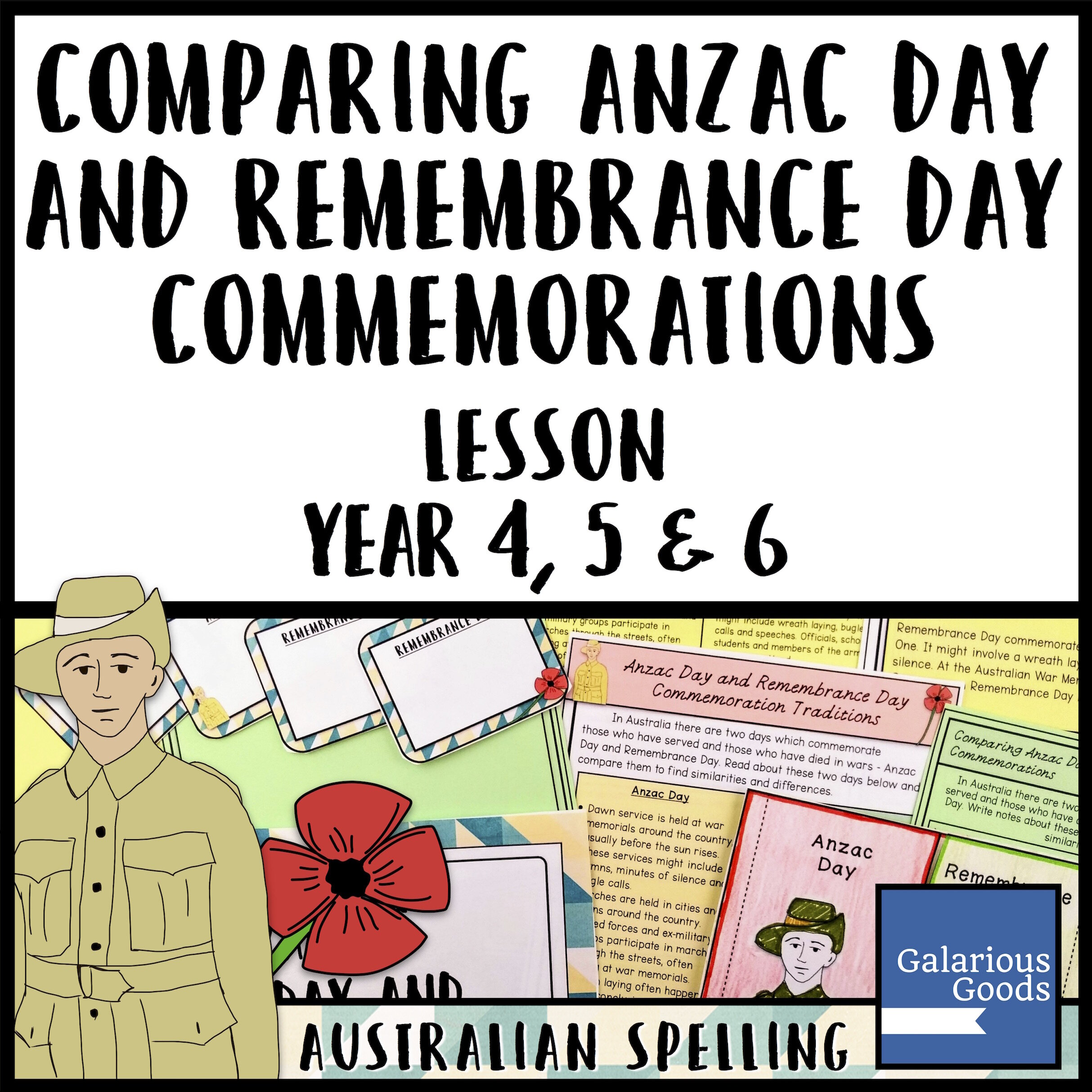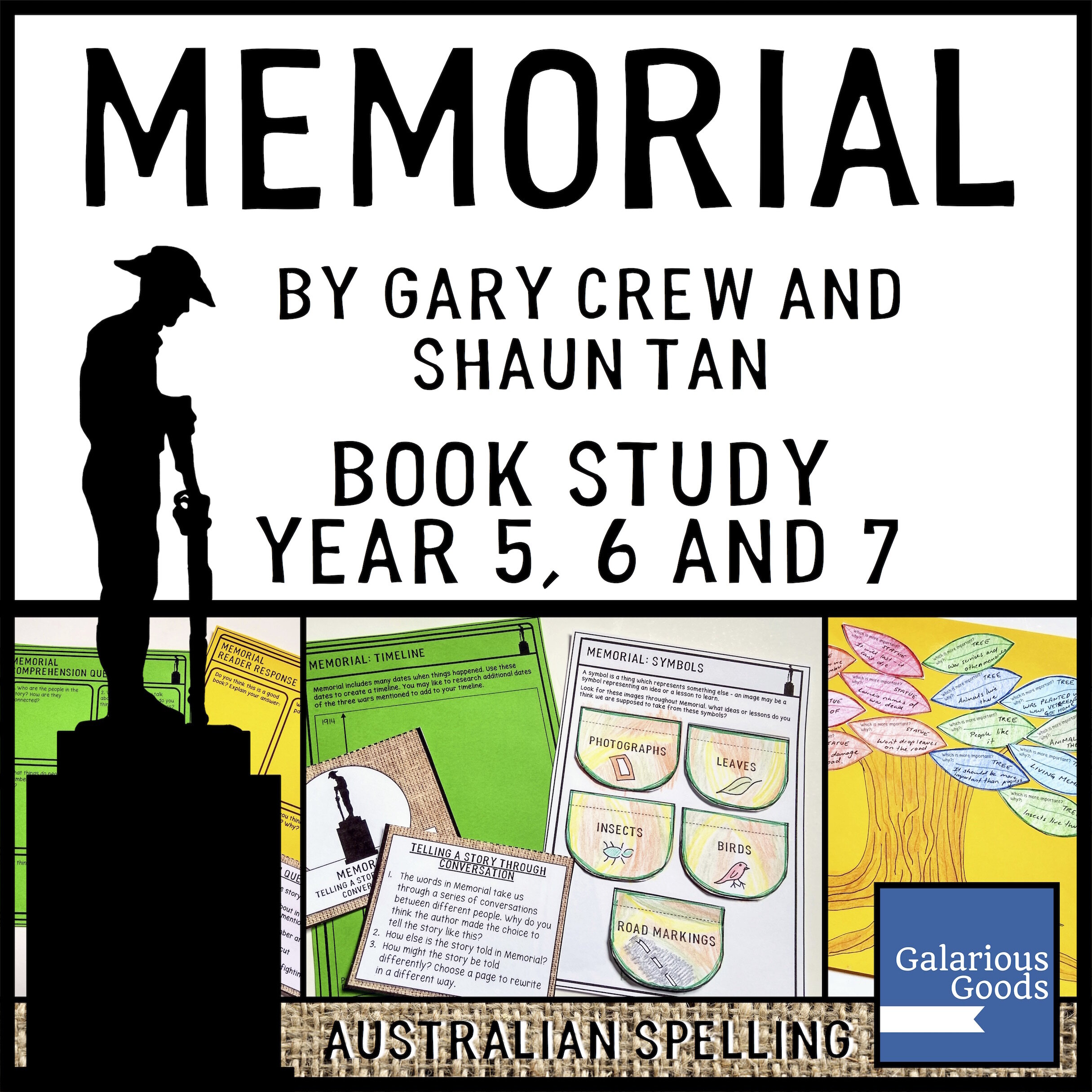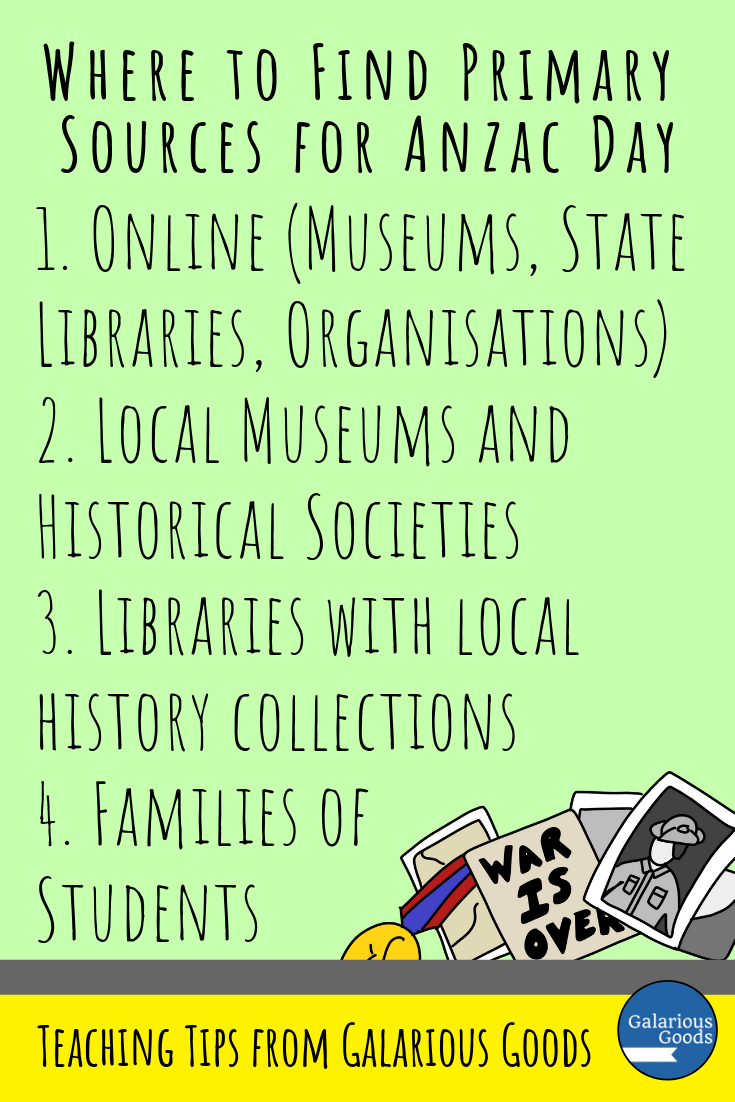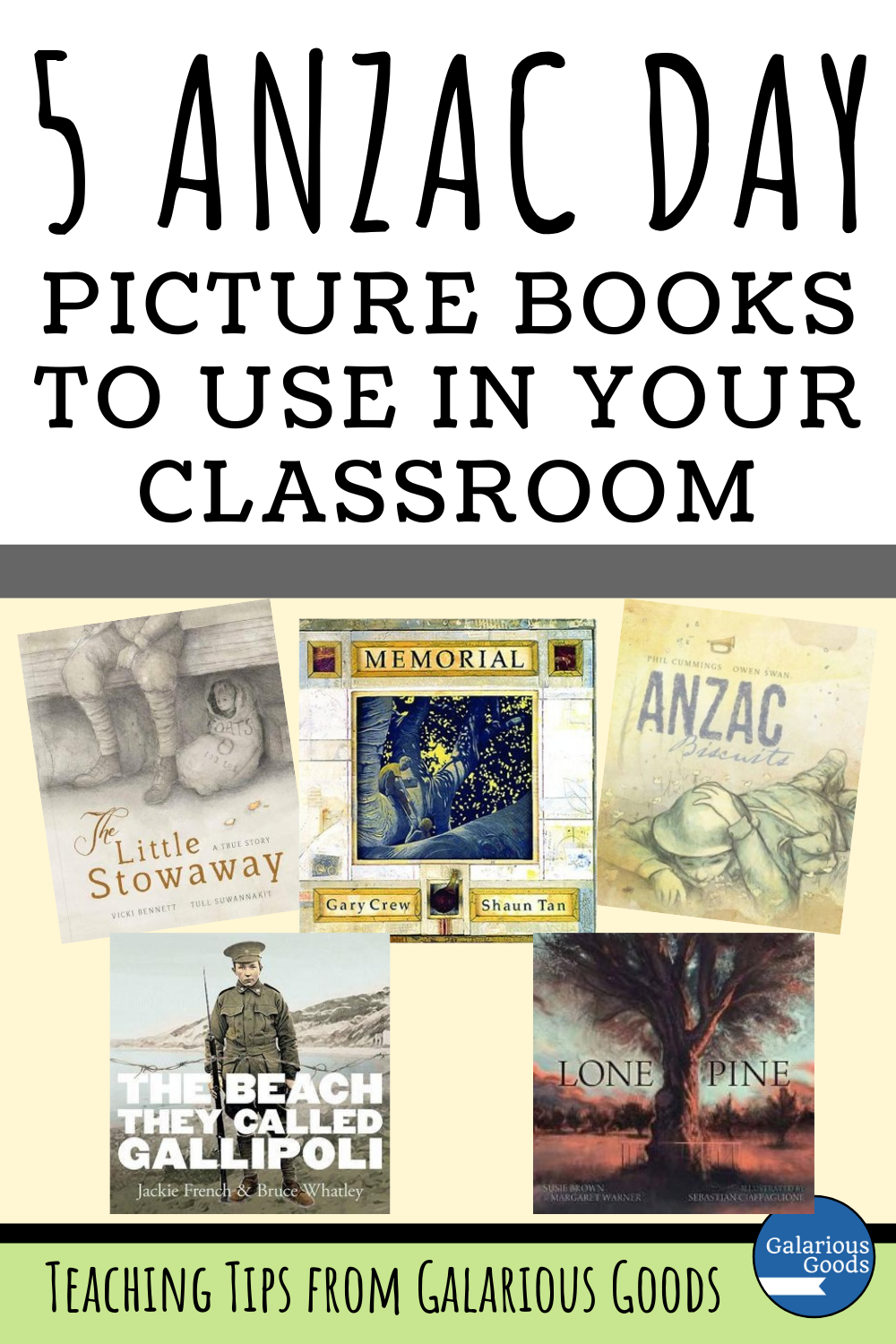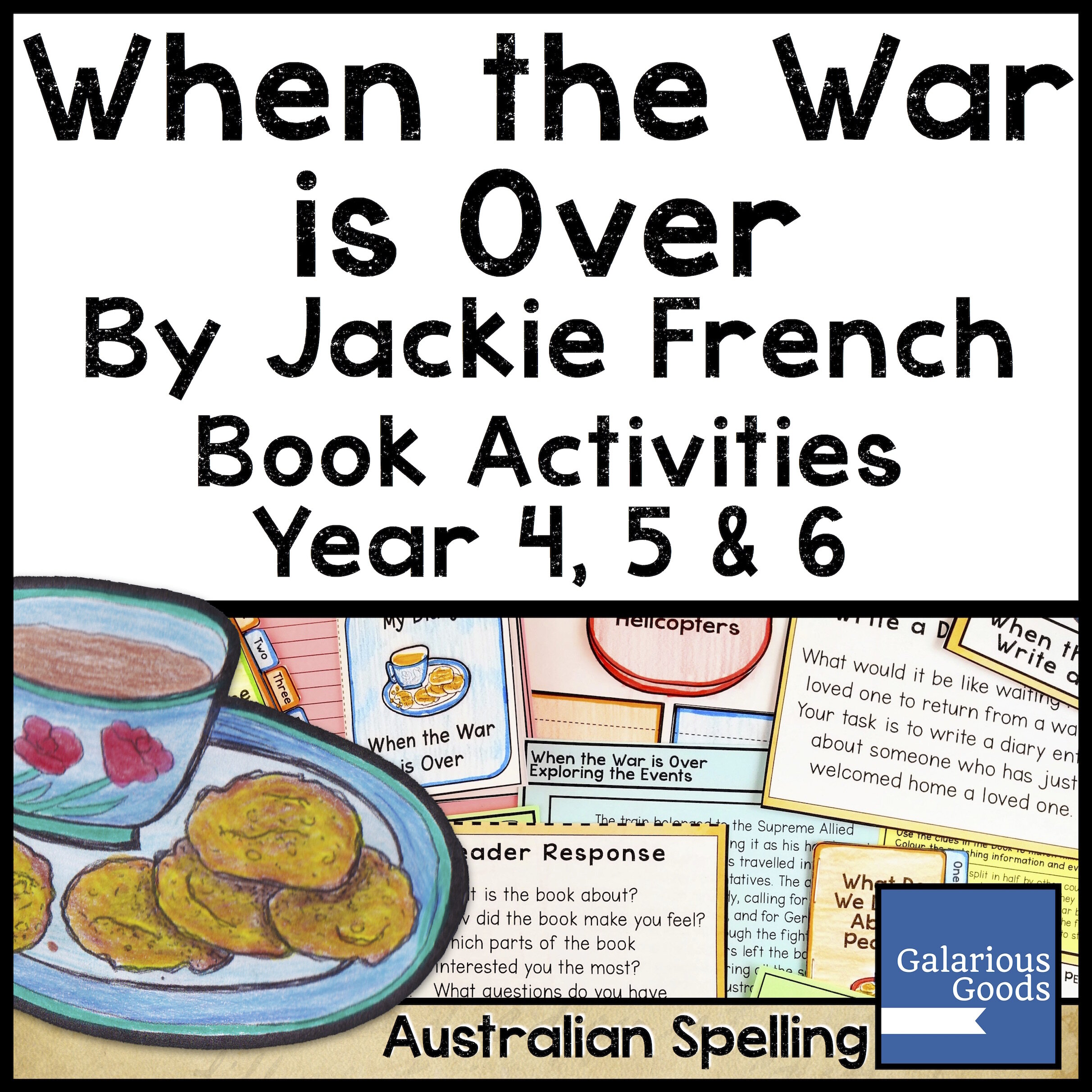Finding Anzac Day Teaching Resources for Your Classroom
/Anzac Day can arrive suddenly in the classroom. Usually nestled somewhere near the Easter holidays, you may not be as ready as you’d like to be to engage your students in meaningful activities. And that is where Galarious Goods - and fabulous picture books can help you out.
Use a Ready-Made Book Study With Your Class
There are so many fabulous Anzac Day picture books you can use in the classroom. To help you take a deeper look at these with your students, Galarious Goods has a range of picture book studies suited to a range of grade levels.
For the youngest students, there’s book activities for two classics - Anzac Biscuits by Phil Cummings and My Grandad Marches on Anzac Day by Catriona Hoy. These teaching resources allow students to engage in comprehension discussions and to explore descriptions. The Anzac Biscuits companion allows students to engage in retell and comparison to to think about what it would feel like to be away from family, while the activities for My Grandad Marches on Anzac Day focuses more on the important elements of Anzac Day and why remembering is important.
For older students, there’s book companions for When the War is Over by Jackie French, Torty and the Soldier by Jennifer Beck and Memorial by Gary Crew. When the War is Over covers a wide range of conflicts and the book activities allow students to take a deeper look at these events, with an activity providing more information. Torty and the Soldier explores the real life story of a soldier and a tortoise and includes an activity exploring loyalty. Memorial - which includes illustrations by the amazing Shaun Tan - explores the nature of memorials and why people remember. The book study is quite in-depth and includes activities on symbolism, telling stories through conversation and creating a visual display of discussions raised by the book.
Explore Any Anzac Themed Picture Book
With so many wonderful Anzac Day picture books from so many notable authors, you may want to explore one - or several - not covered by a specific book companion.
That’s where the Anzac Day Book Studies for Any Book are perfect. With 3 book study resources covering grade levels from Prep/Kindergarten to Year 7, these are great for getting the most out of the Anzac Day books you love and the books you have available to you.
One of my favourite activities in the Prep/Kindergarten and Year 1 resource explores what students learn from the book as they create their own hanging display. This lends perfectly to a whole class or small group discussion about the book you are reading, identifying important words or concepts or ideas from the book and drawing conclusions.
The Year 2, 3 and 4 resource and the Year 5, 6 and 7 resource encourage students to examine vocabulary and to ask their own questions about the Anzac Day themed text or texts you are exploring. Asking questions is such an important skill to foster when students are reading picture books, so this is a great opportunity for practice, while building topic knowledge.
Comparison Activity
Anzac Day is one of two important military commemoration days in Australia, alongside Remembrance Day on the 11th November. Comparing the two days and the way we commemorate them allows students to examine the traditions of both days and the nature of commemoration. The Anzac Day and Remembrance Day: Comparing Commemoration Traditions Lesson allows students to take a closer look at both days and their commemorations and is the perfect lead up lesson for Year 4, 5 and 6 students before the commemorative services at your school.











